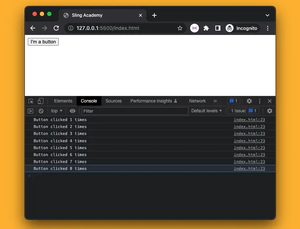With the rise of WebRTC and complex web application demands, working directly with media streams has become a crucial skill for web developers. Insertable streams in JavaScript provide a unique opportunity for more refined control, allowing us to customize media processing directly within our applications.
Understanding Insertable Streams
Insertable streams in JavaScript provide developers with the capability to process data in a more flexible manner. This involves intercepting media streams for additional custom processing, such as filtering, encoding, or analyzing media data before it is rendered, recorded, or sent over the network.
Basic Concepts & Set Up
Before diving into insertable streams, ensure you are familiar with the basic concepts of working with the MediaStream APIs in JavaScript. Here’s a simple example of capturing video input from a user's webcam:
// Accessing the user's camera
navigator.mediaDevices.getUserMedia({ video: true })
.then((stream) => {
document.querySelector('video').srcObject = stream;
})
.catch((error) => {
console.error('Error accessing media devices.', error);
});
The code above acquires a video stream and attaches it to a HTML <video> element. Now, let's explore how we can insert custom processing using insertable streams.
Manipulating Media with Insertable Streams
To utilize insertable streams, you'll typically work with a TransformStream, which allows you to process ReadableStream and WritableStream. Let's look at processing incoming video frames by converting them to grayscale:
const processVideoFrame = new TransformStream({
transform: async (chunk, controller) => {
const frame = await fetch(chunk.data).then(r => r.blob()).then(createImageBitmap);
const canvas = new OffscreenCanvas(frame.width, frame.height);
const ctx = canvas.getContext('2d');
ctx.drawImage(frame, 0, 0);
const imageData = ctx.getImageData(0, 0, canvas.width, canvas.height);
// Iterate over each pixel and convert to grayscale
for (let i = 0; i < imageData.data.length; i += 4) {
const grayscale = imageData.data[i] * 0.3 + imageData.data[i + 1] * 0.59 + imageData.data[i + 2] * 0.11;
imageData.data[i] = grayscale;
imageData.data[i + 1] = grayscale;
imageData.data[i + 2] = grayscale;
}
ctx.putImageData(imageData, 0, 0);
controller.enqueue(ctx.canvas.convertToBlob());
}
});
const videoStream = navigator.mediaDevices.getUserMedia({ video: true });
Inserting the Custom Processed Media
After creating a TransformStream, the next step is integrating this into the original media stream. Here’s how you can plug your custom transforms into the media pipeline:
videoStream.then((stream) => {
const [track] = stream.getVideoTracks();
const processor = new MediaStreamTrackProcessor(track);
const generator = new MediaStreamTrackGenerator({ kind: 'video' });
processor.readable.pipeThrough(processVideoFrame).pipeTo(generator.writable);
const processedStream = new MediaStream([generator]);
document.querySelector('video').srcObject = processedStream;
});
By utilizing this method, the webcam feed is manipulated in real-time to produce a grayscale output before rendering. This is a simplified example and your use-case might involve more intricate processing, such as adding visual effects or analyzing content for data.
Challenges and Future of Insertable Streams
Using insertable streams unveils potential for doing processing that was traditionally limited to native applications. However, it does come with challenges such as ensuring performance doesn't severely degrade, especially under complex transformations, and managing compatibility across different browsers as support may not be uniform.
Insertable streams exemplify the ongoing evolution of web media capabilities, offering exciting opportunities for developers. As this feature matures and sees broader adoption, it will certainly push the boundaries of what's achievable directly in the web browser.











